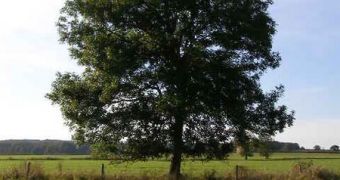Scientists were recently able to finish assembling the largest dated evolutionary tree of flowering plants, a monumental effort that finally sheds some light on how plant species were able to develop resilience to cold. How this ability developed has long since been a subject of curiosity for scientists.
The team, which also included computational evolutionary biologist Stephen Smith, from the University of Michigan's Department of Ecology and Evolutionary Biology, says that the new dataset is able to provide a clear image of the order in which plants developed their cold-bearing strategies.
One of the most widespread adaptations to cold climates is the shedding of leaves in the autumn, to better prepare for the coming of winter. This gives trees, for example, a lot more chances of survival, and enabled them to colonize higher latitudes in the distant past.
The first flowering plants were most likely woody, and featured a solid stem that remained above the ground regardless of seasons, weather conditions, or the passage of time. However, those early plants could only survive in warm and wet tropical environments. How they were able to colonize cold habitats has remained a mystery to scientists for centuries.
“Freezing is a challenge for plants. Their living tissues can be damaged. It's like a plant's equivalent to frostbite. Their water-conducting pipes can also be blocked by air bubbles as water freezes and thaws,” explains the lead author of the research, George Washington University biology professor Amy Zanne.
“So over time, if plants moved into colder climates, they've had to figure out how to get around these problems,” she adds. Full details of the study appear in the December 22 online issue of the top scientific journal Nature.
The evolutionary history of flowering plants was derived from a dated, existing evolutionary tree, which was combined with a database of flowering plant traits by Smith – a coauthor of the research.
“We constructed an enormous evolutionary tree to specifically address some of the most important and still unanswered questions in plant evolution and distribution,” says the expert, who also holds an appointment as a faculty affiliate at the UM Center for Computational Medicine and Bioinformatics.
The most popular methods of braving the cold were found to be leaf shedding, the development of skinnier water-conducting pathways (for species that retain their foliage around the year), and losing surface stems for the winter (for species that survive the winter as herbs).
“Recent advances in computational methods and resources have made this kind of research possible like never before,” Smith concludes.

 14 DAY TRIAL //
14 DAY TRIAL //